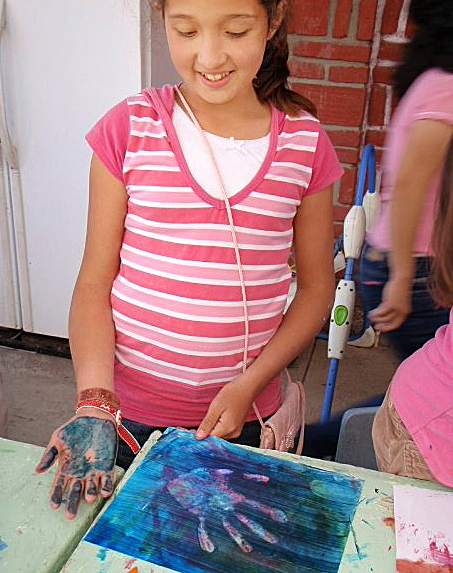The violence and kidnappings of Tijuana’s drug wars have left the city relatively empty of American tourists. Despite Americans’ apprehension of visiting our neighbors across the border, Project BruinHope students continue to travel to La Tribu de Jesus orphanage in Tijuana promoting self-expression through art within the orphanage.
BruinHope organized an art show featuring the orphan’s artwork created over the year. The children’s artwork, along with images of the volunteers working with children, will be featured in the exhibit “Tijuana’s Children: Expressions Through Art” at Kerckhoff Hall today through Friday. The exhibit is a window into the lives that these children live every day and the work that BruinHope puts in to provide these children with a means of expression. Despite efforts of orphanage directors and BruinHope, the orphanage is struggling, which ultimately affects the orphans.
“They are constantly getting evicted, the power gets shut off, they’re moving from school to school, other kids tease them at school, it’s so sad,” said Toren Stearns, BruinHope fundraising director and a fourth-year neuropsychology student.
BruinHope students try to visit the orphanage, which houses nearly 100 children ranging from newborns to age 17, twice a quarter for a day filled with arts, crafts and games. Co-executive director Meredith Pierce, a fifth-year political science student, said that watching the children grow up has been the most gratifying aspect of BruinHope.
“My favorite part about (Project BruinHope) is going back to the same kids and seeing them grow up,” Pierce said.
Even when UCLA refused to sponsor the trip this quarter because of liability concerns, BruinHope students funded their own trip and visited the orphanage. Students bring down much-needed supplies for the orphanage, along with art supplies to provide the orphans with a means of self-expression.
For some children, La Tribu de Jesus is only a temporary home. In hopes that parents will rehabilitate and be able to support their children again, orphanage directors aren’t adopting kids out. Most parents of the children are struggling with poverty and unemployment, worsened by the lowered amount of tourism in the city, but others are involved with the drug cartels or are addicted to drugs. The orphanage directors’ decision is a double-edged sword, according to Pierce.
Although siblings won’t be broken up, if parents don’t rehabilitate, orphans might never have a chance to live in a stable home.
“These kids are out there and people always talk about borders, but they’re like our neighbors; they’re so incredibly close to us and their world is so different,” said Krystal De La Rosa, BruinHope co-executive director and fifth-year biology student.
Although BruinHope is always accepting donations from art supplies to shoes for the children, according to Pierce, this exhibit is more for education about the children than anything.
“For the most part, it’s (the exhibit) just raising awareness and giving information about the kids and where they live,” Pierce said.
The exhibit is a culmination of the children’s artwork over the year, along with some individual stories.
“You’ll see pictures of them. … It’s a very emotional experience,” Stearns said. “I don’t want these kids to be forgotten.”
Organizers of BruinHope said they hope to give UCLA students a different perspective of life in Tijuana.
“Students are encouraged to come and get a glimpse of those who are being affected by recent problems in Tijuana. Due to the battles between drug cartels and the Mexican government, violence and kidnappings have become all that people know about Tijuana,” Pierce said.
“I think it would be interesting for them to come and see pictures of Tijuana and read statistics about it and see that there are people there going on with their lives, but also that the kids are being affected by what’s going on.”
